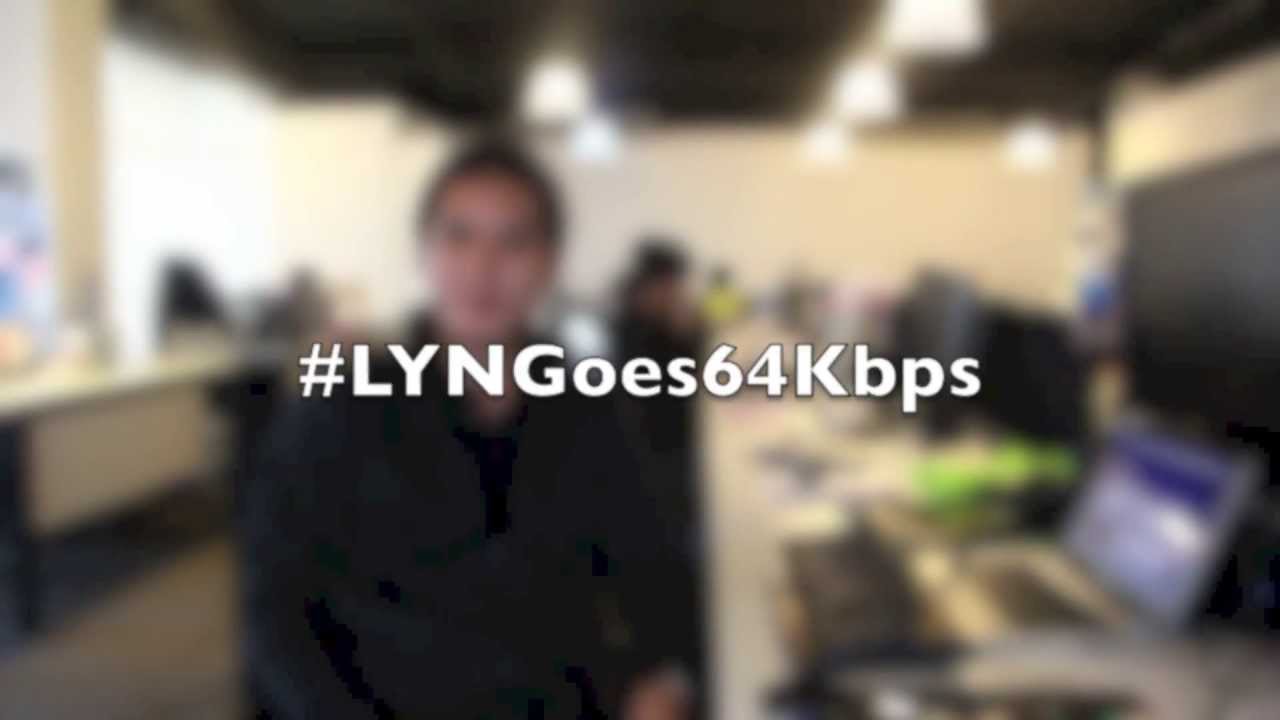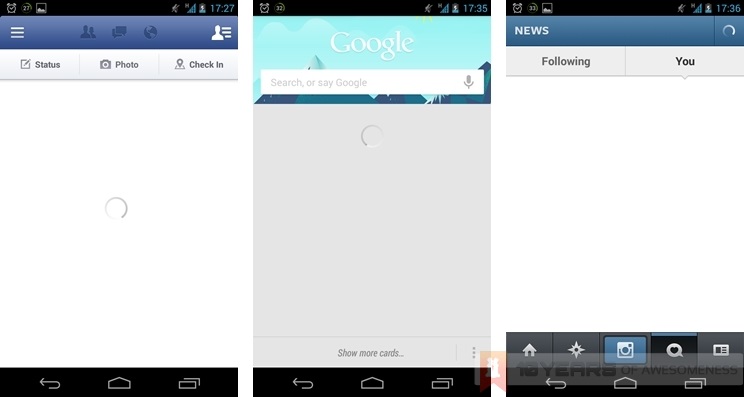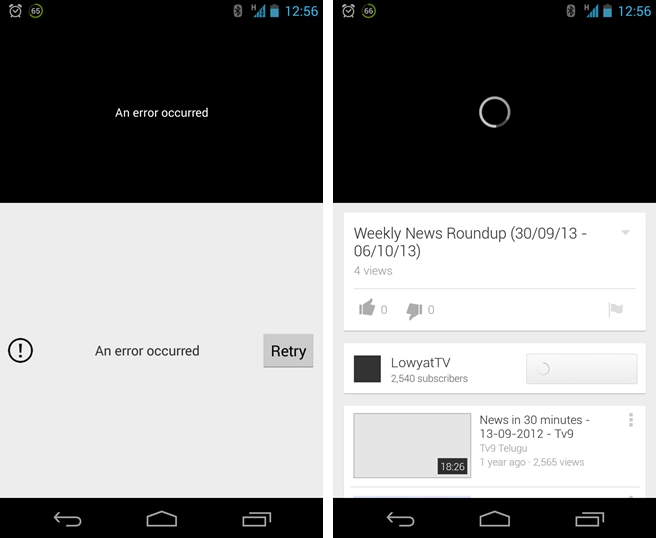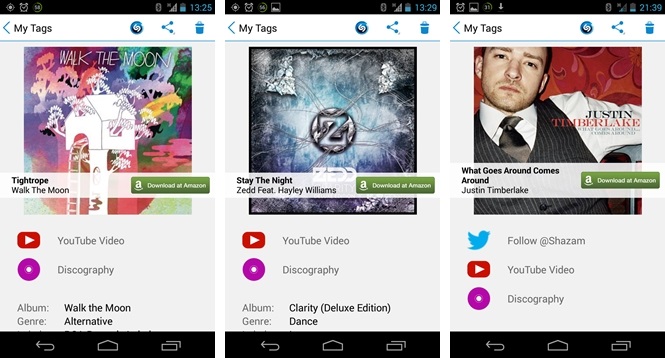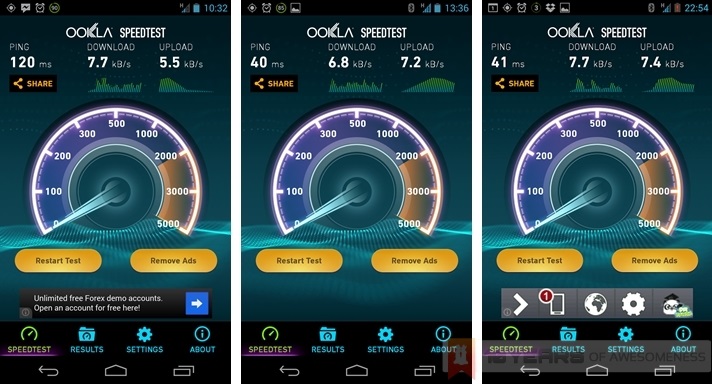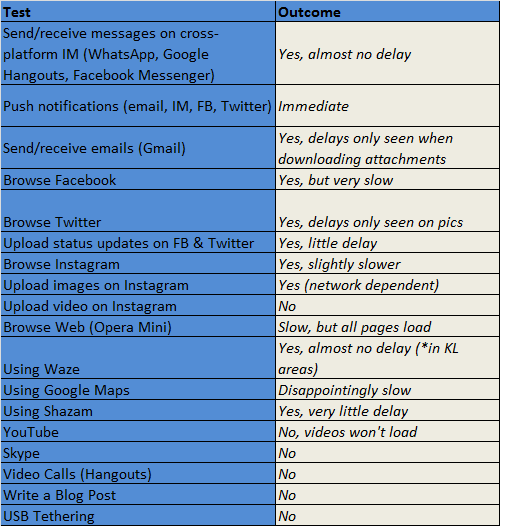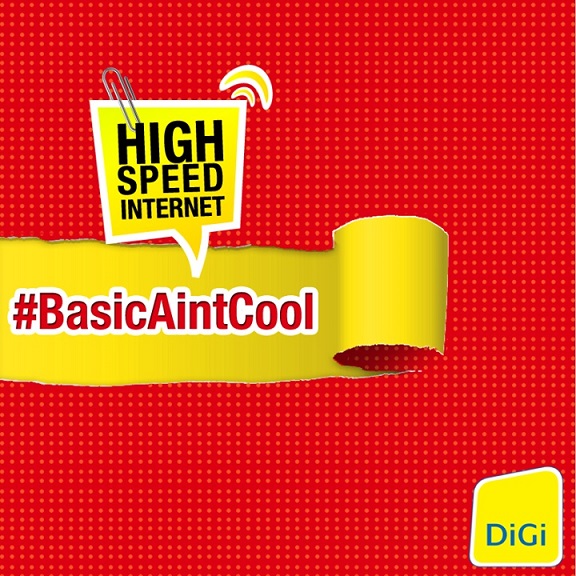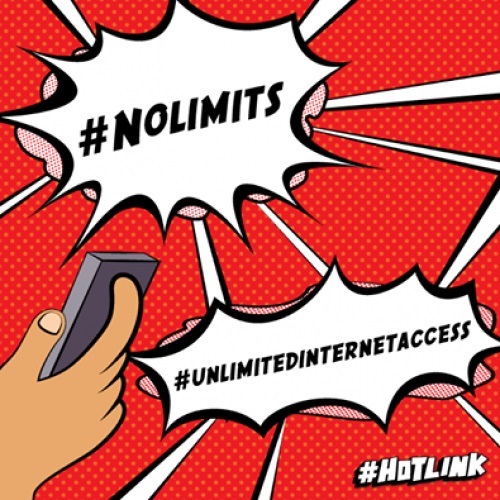
Introduction
And so the seven days came and finally went.
When we set out to explore what could be done on a 64kbps connection with the new #Hotlink prepaid plan, the challenges that lie ahead were not immediately apparent. Sure, I had a feel for what to expect living on a slow connection, but I came away with a lot more than I bargained for as part of the experiment.
This is the conclusion of the Lowyat.NET “Living on a 64kbps Connection” experiment.
Article continues after the jump.
Hypothesis
Over the course of seven days, I set out to fully immerse myself with a prepaid plan that offered free basic Internet. #Hotlink is the first prepaid plan in the country to offer free basic Internet for all users with active validity periods. In the first two days, I became acquainted with what I call the Loading Icon of Despair:
In my more productive times of the first 48 hours, I conducted tests that simulate what many smartphone users go through on a standard day: sending and receiving emails, cross-platform messaging on WhatsApp, even the occasional surfing of websites. I found that these could all be done with little disruption in terms of speed, though Facebook and web surfing took quite a hit.
The next three days didn’t make things any easier. While readers have been helpful in giving out app recommendations that work well with slow connections, I was slowly but surely feeling the strain of being powered by a connection that I felt was slowly affecting my state of mind.
I was, in all honesty, ready to quit the experiment by Day 6.
Procedure: Days 6 and 7
But, with some encouragement I trudged on. After all, it is just another 48 hours. And I knew I’d hate myself for quitting before the end. This was my runner’s wall, and I just had to power through.
To spice things up, I tried to see just how far I can push the limits of a 64kbps connection. I tried watching the latest Weekly News Roundup on the YouTube app; the Loading Icon of Despair made an unwelcome – and extended – appearance. Instagram video posts on my feed almost always failed to load.
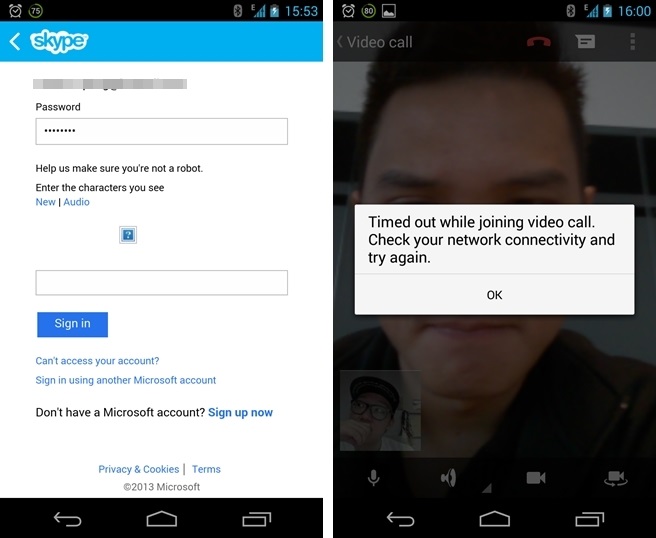 (left) Login page for Skype (note the timed out Captcha) and (right) Google Hangouts
(left) Login page for Skype (note the timed out Captcha) and (right) Google Hangouts
Unwaveringly, I powered on. Video and voice calls on Google Hangouts? Didn’t work. The person I initiated a video call with didn’t even receive an invitation. Skype? I couldn’t even log in to my Microsoft account, let alone make a VoIP call (which again, the recipient saw no notification while I had a dial tone).
Some readers also came out with interesting suggestions. Shazam, for example, took just a few seconds longer to identify a song, which was good. Could you publish a blog post on 64kbps? In one word: no. Wordpress constantly timed out when I tried to access my blog’s dashboard, and more often than not I failed to even log in at all.
Someone also asked if we could connect a laptop to the Internet via USB tethering. Of course, that isn’t allowed as part of #Hotlink’s terms of use, but I decided to see just what happens if I did. Will it automatically subscribe to a high speed Internet plan, and charge me immediately? Will my Nexus 4 automatically disconnect itself from mobile data? Will my phone/laptop explode for attempting something that goes directly against the Terms of Use?
Surprisingly, none of the above. Bummer.
Nothing actually happened. Literally. As I connected my phone to the laptop and switched USB tethering on, both devices went about establishing an Internet connection just as it would on normal connections. My Windows notification bar even displayed that I was connected to the Internet…but I wasn’t. The easiest indicator was that both Google Drive and Dropbox stopped syncing on my laptop. Firing up my browser, not a single page loaded. So, tough luck guys. No mobile tethering on #Hotlink.
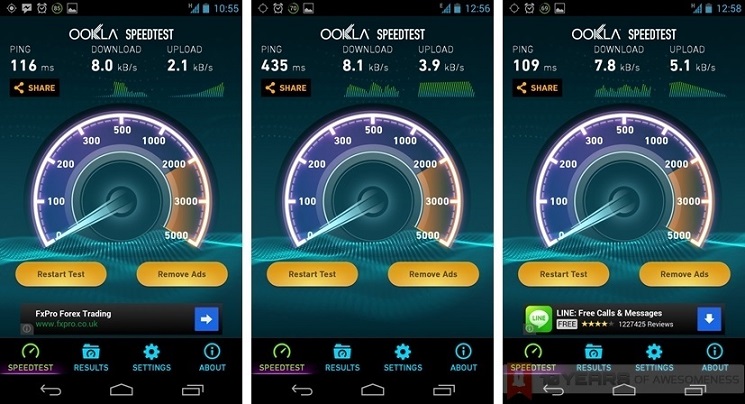 Not that you can do much at these speeds, anyway.
Not that you can do much at these speeds, anyway.
The final test of the experiment was to upload a video to Instagram. Instagram videos are a relatively new feature on the social media platform, and has essentially become quite an addition for filter lovers everywhere. I uploaded the video a good three hours before 12am of Day 7, feeling there was ample time to upload a 15-second clip.
I stopped retrying the upload after three attempts, and only managed to upload the clip once I connected to WiFi at home.
And that was it. I was done living on a 64kbps connection.
Results
Update: #Hotlink’s Terms of Use also has a fair usage quota of 3GB for its free basic Internet service, before users are disconnected when it is reached. Plus, any subscription to high-speed Internet (via Hot Tickets or #Hotlink’s own subscription service) has its own quota and does not eat into this fair usage quota.
It does appear to go against the “unlimited” free Internet access Maxis is implying, but in practical terms it would be really, really difficult to exhaust that amount on 64kbps – especially when many services, such as YouTube, would not even load.
Discussion
Now that we’ve all got a feel of what you can and cannot do on the new #Hotlink plan, can you really live on a 64kbps connection?
In one word: yes.
The new #Hotlink opens a new avenue for prepaid users nationwide, with the promise of free Internet connectivity never before seen in any prepaid plan. It profoundly changes the local mobile prepaid scene, and lays the gauntlet for the other local telcos nationwide to catch up.
But then again, #Hotlink is not without its shortcomings.
For example, #Hotlink users can only enjoy the free basic Internet connection when their line is active; that is, when you have any amount of credit that is still valid. Hence, in order for users to enjoy one month’s worth of free basic Internet, they would need to top up a minimum of RM30, which can then be used for calls, SMS or the subscription-based mobile Internet services. That amounts to RM1 per day to enjoy free basic Internet. Then again, purchasing Hot Tickets offer added value for users while giving much-needed credit validity.
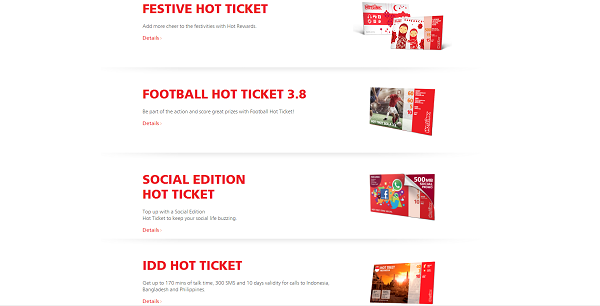 The various Hot Tickets available for Hotlink
The various Hot Tickets available for Hotlink
In contrast, other prepaid plans such as U Mobile’s UMI 18 and UMI 28 offer high speed Internet (250MB and 500MB respectively) and free call minutes and SMS. Once the Internet quota is passed, users will then be throttled – hence the “unlimited” moniker. Plus, UMI 18 and 28 only require a one-time payment of RM18 or RM28 and users get to enjoy the benefits for 30 days. What’s more, any unused data, minutes or SMS will be rolled over to the next subscription.
Naturally, the #Hotlink plan also isn’t for everyone. Power users who constantly need to be connected will find that a 64kbps connection is cripplingly slow. The same, too, can be said of social media junkies.
So just who stands to benefit the most from the new #Hotlink prepaid plan?
Students. Those living in rural areas with limited Internet connectivity. Feature phone users who use their prepaid credit for calls and SMS, but are slowly migrating into a full smartphone. There is a great wealth of untapped phone users in Malaysia who stands to benefit from the new #Hotlink plan, and that can only be for the benefit of the country and encourages increased mobile penetration rates.
Conclusion
Regardless, the new #Hotlink prepaid plan is a catalyst the local mobile industry needs. For one of the “big three” telcos in Malaysia to offer free Internet – whatever the speed – is quite a milestone, and challenges other telcos to offer better packages to stay competitive.
What we’re seeing here isn’t the best prepaid plan in Malaysia, but potentially the most important.
Follow us on Instagram, Facebook, Twitter or Telegram for more updates and breaking news.

